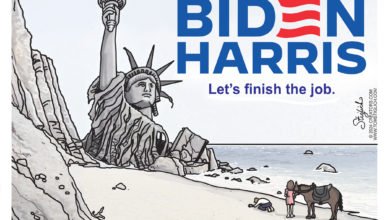A Thousand Fast Food Workers Strike For Increased Minimum Wage Over MLK Weekend

Roughly 1,000 American fast-food workers around the country went on strike Friday to protest for a $15 minimum wage and demand union rights in honor of the Martin Luther King Jr. federal holiday, organizers said.
The progressive group Fight For $15 called for and celebrated the strike Friday and encouraged fast-food workers nationwide to join the strike and protest low wages. There were demonstrations in more than 15 cities including Atlanta, Chicago and Los Angeles, CNN Business reported.
“There are workers in the South still continuing to carry on that legacy to fight for racial and economic justice because they know those fights are intertwined,” Allynn Umel, organizing director for Fight For $15, told CNN Business.
WATCH: Today, fast-food workers in 15 cities across the U.S. went on STRIKE for fair pay and union rights on the job. We also held demonstrations calling on Congress to #RaiseTheWage ASAP.
Momentum is on our side, and with solidarity, we will win. #FightFor15 pic.twitter.com/Q7Sc2BTcAY
— Fight For 15 (@fightfor15) January 16, 2021
Umel told CNN Business that it sought to stage the strike this weekend in honor of Martin Luther King Jr.’s legacy. Roughly 20% of fast-food workers in the U.S. are black while black people represent just 13% of the total population.
“Raising the minimum wage to $15 an hour is among the most powerful tools to lift up Black and Brown workers,” Umel said, CNN Business reported.
The protesters mainly work for McDonald’s, Taco Bell, Popeyes and Burger King, according to CNN Business. Rita Blalock, a McDonald’s cook from North Carolina, participated in a car caravan protest Friday because she is struggling to pay her bills off of her $10 per hour wage.
“I couldn’t pay rent, couldn’t eat a lot of times,” Blalock told CNN Business. “If you can’t go to work but so many hours, you don’t have enough to cover what you need to cover in the first place.”
The median McDonald’s employee is a part-time crew member who makes $9,291 per year, the company announced in 2019, according to Business Insider.
The U.S. federal minimum wage is currently set at $7.25 per hour, according to the Department of Labor. However, some states have passed laws that have mandated minimum wages as high as $13.69 per hour in Washington and $13 per hour in California.
In November, Florida voters approved a minimum wage increase to $15 by 2026 in a referendum.
President-elect Joe Biden announced Thursday that he would seek a federal minimum wage increase to $15 as part of his initial coronavirus stimulus package, according to CNBC.
Content created by The Daily Caller News Foundation is available without charge to any eligible news publisher that can provide a large audience. For licensing opportunities of our original content, please contact licensing@dailycallernewsfoundation.org




